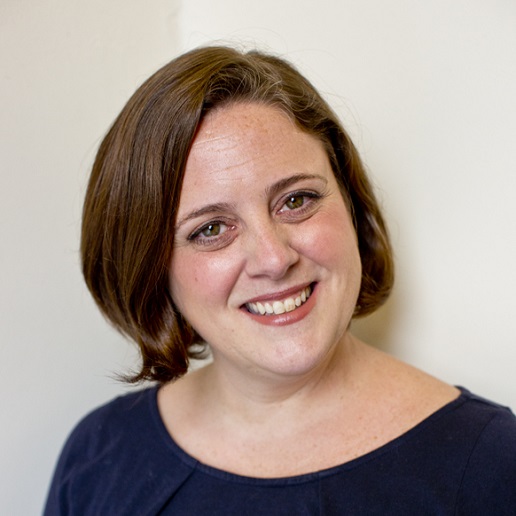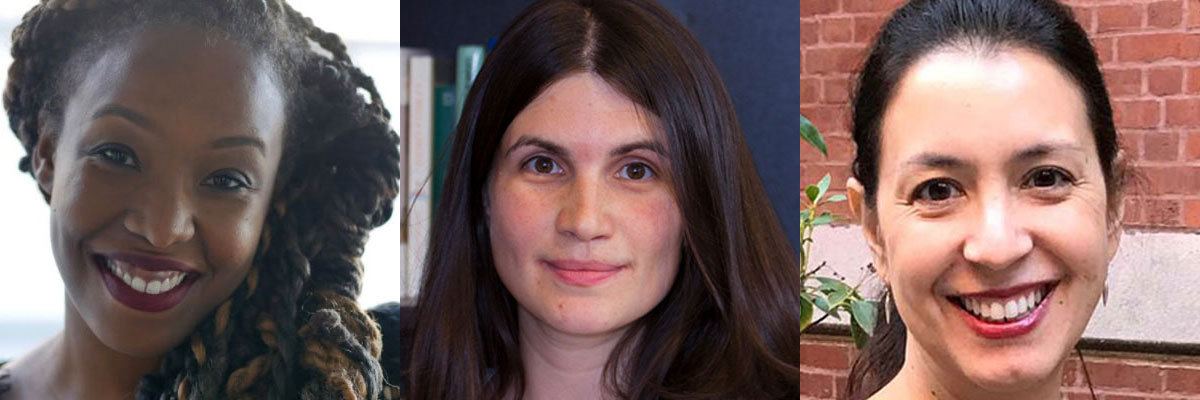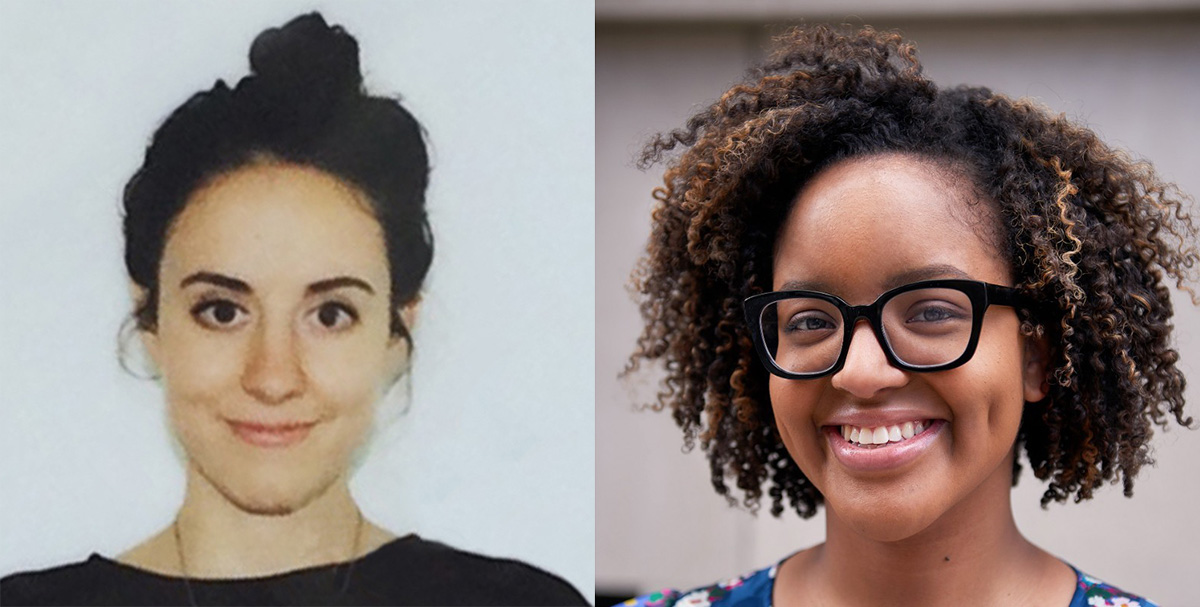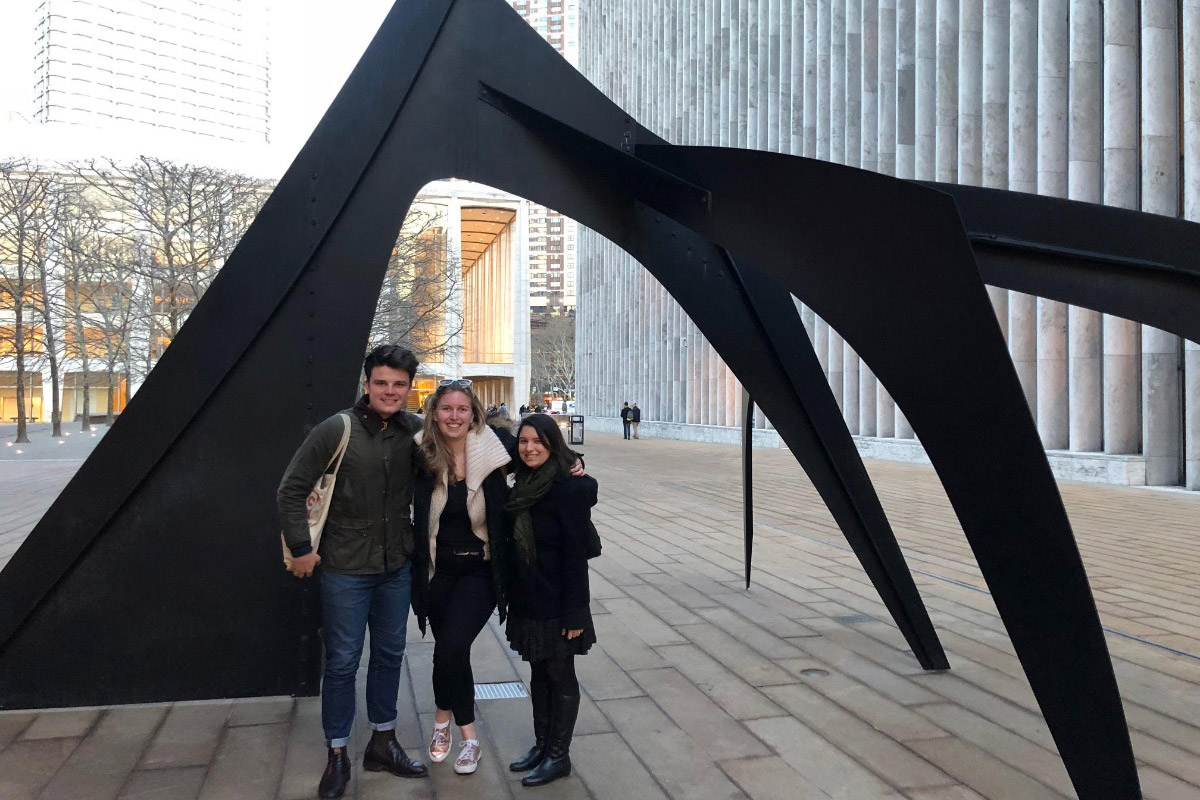Several years ago, when Teachers College asked departments to explore making their academic programs affordable for a more diverse range of students, Jennifer Lena, Director of the College’s Program in Arts Administration (ARAD) needed no prodding.
ARAD boasts more than 700 ARAD graduates worldwide, with recent alumni working at institutions such as the Guggenheim Museum, Deutsche Bank, the Jewish Museum, Facebook, the New Jersey Performing Arts Center and Carnegie Hall. But for Lena — now Associate Professor of Arts Administration — rethinking ARAD was about more than bolstering its reputation or boosting enrollment. Rather, it was an opportunity to remake a field long under-valued and highlight its special relevance in a time when diversity increasingly characterizes and divides the nation.

ELEVATING THE FIELD In leading the redesign of TC's program, Jennifer Lena, Associate Professor of Arts Administration, is seeking to prepare leaders to be “responsible for identifying what is most beautiful and significant in our culture.” (Photo: TC Archives)
“For 200 years, arts administration has been seen as a women’s avocation — akin to what, in the 1970s, was called an ‘MRS Degree,’ which was a very sexist expression for rich women going to college to find a husband,” Lena says. “But arts administrators aren’t dabblers. They’re responsible for identifying what is most beautiful and significant in our culture. So an arts administration program, by definition, must be more than a fancy finishing school. It has to prepare people to be on the front lines of how this nation recognizes itself in its art. And while right now the professional staff of arts organizations are predominantly White and upper middle-class, increasingly, the art that’s in demand is made by people who are very different than that. So we need people who are as diverse as this country — a new generation of changemakers and leaders who also are excellent managers, because these are very challenging times.”
“An arts administration program, by definition, must be more than a fancy finishing school. It has to prepare people to be on the front lines of how this nation recognizes itself in its art. So we need people who are as diverse as this country — a new generation of changemakers and leaders who also are excellent managers, because these are very challenging times.”
— Jennifer Lena, Associate Professor of Arts Administration
Real-World Focus
Fall 2021 will mark the launch of a revamped 48-credit ARAD master’s degree program that showcases the fruits of work by Lena, Gemma Mangione, ARAD Program Director & Lecturer, and Katarina Wong, Program Manager. The effort has included extensive benchmarking against peer programs, systematic review of surveys of ARAD students over five years, and a stakeholder analysis of alumni and current faculty.
The makeover’s headline is a 20 percent drop in tuition cost, enabled by a reduced course load and lower credit threshold — but it also provides even better preparation for today’s arts scene and the current job market.

TEAM ARAD Clockwise from top left: Davinia Gregory, Assistant Professor of Arts Administration; Gemma Mangione, ARAD Program Director & Lecturer; and Katarina Wong, Program Manager. (Photos: TC Archives)
“By taking fewer courses, our students will have more extracurricular time to prepare for the informal requirements of an arts administrators’ job,” Lena says. “They can complete all their work at the highest standards while participating in the New York City arts scene. Instead of doing homework at home, their homework will be seeing a show or going to a gallery. Pedagogically that’s really important.”
That same shift in emphasis will extend to the summer, when ARAD students often had to take summer courses in order to meet their degree requirements, but will now have more time for “internships that are extensions of the classroom in the fullest sense.”
“Other arts administration programs leave internships to the student to figure out, but we talk to them about their internship objectives from the beginning, and we’re with them every step of the way,” Lena says.
Another important part of the new program is a focus on data literacy.
“Students come in and learn to make sense of information and data about the world. For example, sales data or audience surveys or analysis of themes in shows, or streaming data from online courses. Because that’s the world of the arts now — generating information to reach qualitative targets.”
— Jennifer Lena, Associate Professor of Arts Administration
“Students come in and learn to make sense of information and data about the world,” Lena says. “For example, sales data or audience surveys or analysis of themes in shows, or streaming data from online courses. Because that’s the world of the arts now – generating information to reach qualitative targets.”
Stronger data skills also are applicable to other industries,” Lena adds. “We train them in that critical capacity, and then a career at, say, Spotify might open up.”
The new program also allows TC students to use their electives to take courses in other departments across the College and at other Columbia institutions. “The interdisciplinarity of the degree is really important,” says Lena, who holds a courtesy appointment in Columbia University’s Department of Sociology, and whose own work focuses on the organizational and institutional conditions for the creation, modification, or elimination of cultural categories like genres. (She is co-editor of a book series, Culture and Economic Life, published by Stanford University Press and is reputedly the first sociologist to commission a Grammy-nominated album – Hilos, composed by Gabriela Frank and performed by ALIAS Chamber Ensemble.)
Indeed, in a field with many powerful voices and perspectives, it’s essential to have an ear for broader debates and trends in the arts and cultural policy.
“No man or woman is an island, and no arts organization exists in isolation. Let’s be conversant and literate on those broader debates. We want this program to reflect the fact that as arts administrators, this is a global community of practice, especially during the current climate we face.”
— Gemma Mangione, ARAD Program Director & Lecturer
“No man or woman is an island, and no arts organization exists in isolation,” says Mangione. “Let’s be conversant and literate on those broader debates. We want this program to reflect the fact that as arts administrators, this is a global community of practice, especially during the current climate we face.”
To that end, leveraging an international network of faculty, the redesigned program emphasizes international practices in arts management that “permit the contemporary administrator to be a true citizen of the global art world,” says Wong.
Instigating Collaboration
That outlook and skillset is both exemplified and emphasized by Davinia Gregory, an interdisciplinary writer, researcher, educator and artist who joined the ARAD program this past September as Assistant Professor of Arts Administration.
In courses such as Race and the Arts and Decolonizing Culture: International Perspectives, Gregory takes a holistic approach to teaching, encouraging students to examine the impact that racialization and Race thinking have on the arts and vice versa. Students identify, analyze and critique the broader economic system within which the arts exist in the Western world. They explore the cultural logic of that system and the ethical considerations in working alongside different organizations and institutions.
Ultimately, Gregory challenges students to ask themselves: What does it take to be a good leader? How are you going to use your career to make the world a better place? What drives you?

FINDING THEIR NICHE Students Cornelia Clay (left) and Shanae Burch have appreciated the focus on diversity in ARAD courses. (Photo: TC Archives)
“I have learned so much from Dr. Gregory’s foundational readings, which point to systems that perpetuate the power imbalances and injustices on which many educational institutions were founded,” says second-year ARAD master’s degree student Cornelia Clay. “A major goal of mine is to reprioritize artists’ voices in the art world. In the world we live in, voices are too often lost and undervalued — it’s so crucial to make space for them. Art is a way to open minds and share perspectives, so it's essential that artists and audiences alike have the opportunity for that exchange. And the ‘Race and the Arts’ course is particularly transformative because it focuses on how we might enact change and rebalance inequities from outside and within arts institutions.”
Gregory also wins plaudits for her commitment and connection with students.
“Dr. Gregory is incredibly thoughtful with her teachings,” says Shanae Burch, a student who audited “Race and the Arts.” “She balances texts with artistic encounters that help us detangle the creative tensions that must be overcome in this field. She has further encouraged me to explore and unpack ideas about Black identity beyond the U.S. in my dissertation.”
Gregory says she “instigates” students to engage in effective, deep collaboration and doesn’t plan on stopping anytime soon. “I think that's the core of all ideas and future change — people really aiming to understand one another on the deepest level. And that’s what this program is about — understanding and leading at the same time.”
“I don’t aim to give hope, but I do aim to show how entangled and entrenched racial hierarchy is in our societies, and what can be done to fix it. Then let's explore that work together and discover how the arts can contribute.”
— Davinia Gregory, Assistant Professor of Arts Administration
Given the many divides in America and across the world today, that’s a difficult but essential uphill struggle.
“I don’t aim to give hope,” she says, “but I do aim to show how entangled and entrenched racial hierarchy is in our societies, and what can be done to fix it. Then let's explore that work together and discover how the arts can contribute.”
Touching the Future
Lena says she’s deeply gratified that elements of the ARAD relaunch are already making a difference for current students like Clay and Burch. But she’s even more excited by the thought of what the program’s future impact.
“I have learned so much from Dr. Gregory’s foundational readings, which point to systems that perpetuate the power imbalances and injustices on which many educational institutions were founded. The ‘Race and the Arts’ course is particularly transformative because it focuses on how we might enact change and rebalance inequities from outside and within arts institutions.”
— Cornelia Clay, second-year ARAD student
“The fact that we’ve reduced the cost of tuition by 20 percent is probably the thing I’ll do in my career that will benefit the greatest number of people,” she says. “It means we’ll get all kinds of people in the program that we’ve never gotten before — and that means all kinds of new people running museums and galleries and filling other jobs where they can earn promotions and benefits and enough money to support families. We’ll be training the next head of the Met, and nine million people go there every year. Multiply that by Lincoln Center and other institutions our graduates might end up running, and you’ve got something really huge going on.”
